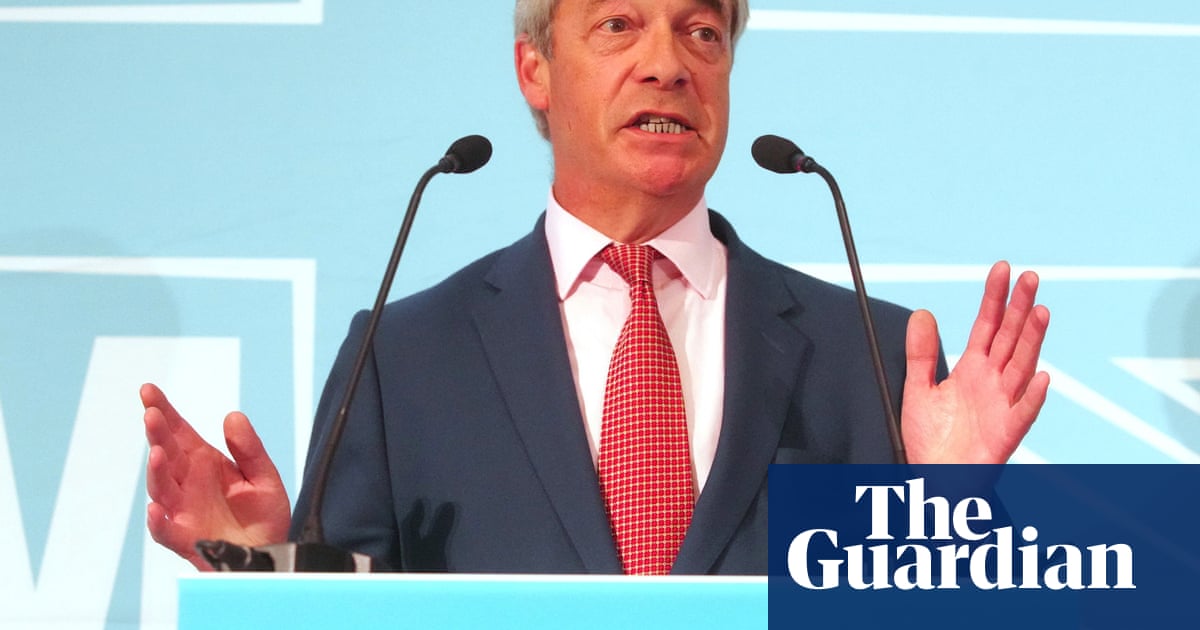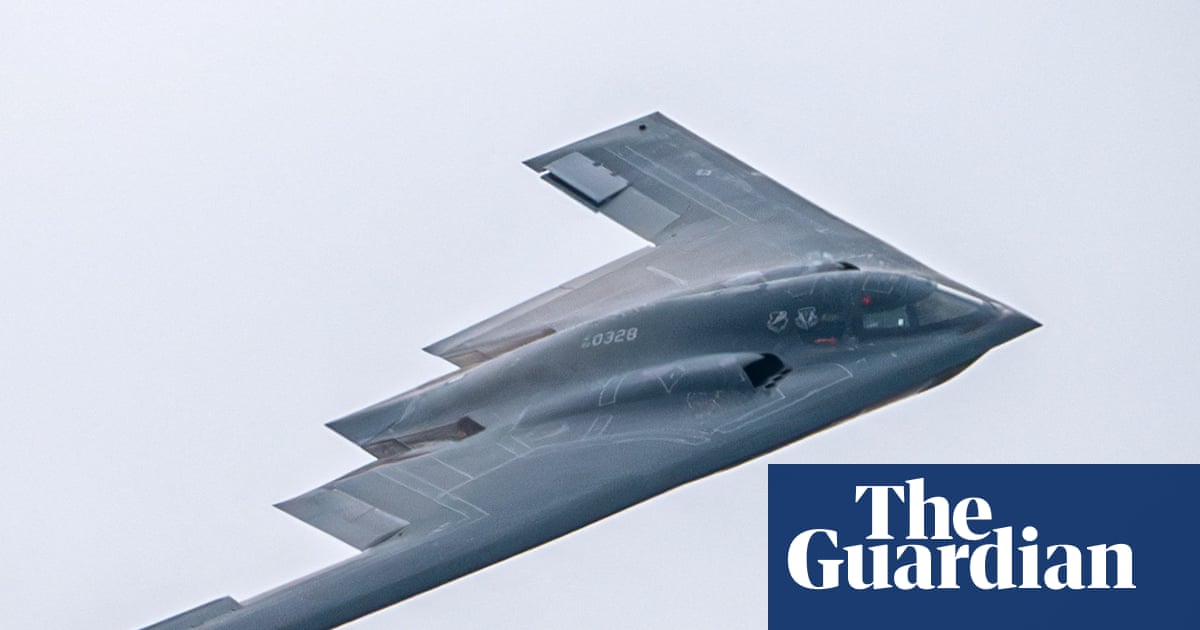In May 2003, George W Bush landed on the deck of a US aircraft carrier to deliver a triumphant speech, declaring that major combat operations in Iraq had ended – six weeks after he had ordered US troops to invade the country. Bush spoke under a now infamous banner on the carrier’s bridge that proclaimed, “Mission Accomplished”. It would turn into a case study of American hubris and one of the most mocked photo-ops in modern history.
As Bush made his speech off the coast of San Diego, I was in Baghdad covering the invasion’s aftermath as a correspondent for a US newspaper. It was clear then that the war was far from over, and the US was likely to face a grinding insurgency led by former members of the Iraqi security forces. It would also soon become clear that Bush’s rationale for invading Iraq was built on a lie: Saddam Hussein’s regime did not have weapons of mass destruction and was not intent on developing them. And Iraq had nothing to do with the September 11 terrorist attacks on the US, despite the Bush administration’s repeated attempts to connect Hussein’s regime to al-Qaida.
Today, Donald Trump has dragged the US into another war based on exaggerations and manipulated intelligence: the Israel-Iran conflict, which began on 13 June when Israel launched a surprise attack killing some of Iran’s top military officials and nuclear scientists, and bombing dozens of targets across the country.
The Israeli prime minister, Benjamin Netanyahu, claimed that Israel had to attack because Tehran was working to weaponize its stockpile of enriched uranium and racing to build a nuclear bomb. “If not stopped, Iran could produce a nuclear weapon in a very short time,” Netanyahu said, as the first wave of Israeli bombs fell on Iran. “It could be a year. It could be within a few months.”
Before dawn on Sunday, US warplanes and submarines bombed three major nuclear facilities in Iran. In a speech from the White House, Trump declared the operation a “spectacular military success” and said the sites had been “totally obliterated”. Trump added that his goal was to stop “the nuclear threat posed by the world’s number one state sponsor of terror”.
But does Iran pose the immediate threat that Netanyahu and Trump have claimed?
US intelligence officials, along with the UN’s nuclear watchdog and independent experts, say that while Iran has dramatically increased its supply of uranium enriched to nearly weapons grade, there is no evidence it has taken steps to produce a nuclear weapon. In March, the US director of national intelligence, Tulsi Gabbard, told Congress that America’s intelligence agencies continued “to assess that Iran is not building a nuclear weapon”. She added that Iran’s supreme leader, Ayatollah Ali Khamenei, “has not authorized the nuclear weapons program he suspended in 2003”.
Gabbard also noted that Iran’s stockpile of enriched uranium was “at its highest levels” and “unprecedented for a state without nuclear weapons”. That’s largely because, in 2018, Trump unilaterally withdrew the US from the Iran nuclear deal that was negotiated in 2015 between Tehran and six world powers. Under that agreement, Iran agreed to limit its uranium enrichment in exchange for relief from international sanctions. A few years after Trump tore up the deal that was signed by his predecessor, Barack Obama, Iran began to enrich uranium up to 60% purity – a short step away from the 90% level required for a nuclear device.
Still, in a report issued last month, the International Atomic Energy Agency, the UN watchdog that has monitored Iran’s main nuclear enrichment sites for years, said it found no evidence that Tehran was actively developing a weapons program. The agency criticized Iranian officials for failing to provide access to some sites and to cooperate with UN inspectors, especially over Tehran’s past secret nuclear weapons program, which is believed to have ended by 2003. Despite these criticisms, the IAEA report said it had “no credible indications of an ongoing, undeclared structured nuclear program”.
Recent US intelligence assessments found that Iran was not actively pursuing a nuclear weapon and was up to three years away from being able to develop an actual warhead and deploy it on a missile. (Under pressure from Trump, who said twice last week that Gabbard’s testimony to Congress in March was “wrong”, the intelligence chief changed course on Friday to say that Iran could produce a nuclear weapon “within weeks to months”.)
Of course, there’s one state in the Middle East that has an active nuclear weapons program: Israel, which doesn’t acknowledge having a nuclear arsenal. But in January, the Stockholm International Peace Research Institute identified Israel as one of the world’s nine nuclear-armed states, and estimated that it currently has 90 warheads.
Despite all the evidence to the contrary, Netanyahu continues to insist that Iran was dashing to produce a nuclear weapon. “The intel we got and we shared with the United States was absolutely clear – was absolutely clear – that they [the Iranians] were working in a secret plan to weaponize the uranium,” Netanyahu told the Fox News anchor Bret Baier (who hosts one of Trump’s favorite news shows) in an interview on 15 June. “They were marching very quickly. They would achieve a test device and possibly an initial device within months and certainly less than a year.”
Netanyahu’s statements echo the exaggerated intelligence and sense of fear peddled by the Bush administration ahead of the US invasion of Iraq – and it’s exactly the kind of open-ended conflict based on lies that Trump promised voters he would avoid as president. In September 2002, Bush’s national security adviser, Condoleezza Rice, said in a CNN interview that “there will always be some uncertainty about how quickly” the Iraqi regime could acquire nuclear weapons. “But we don’t want the smoking gun to be a mushroom cloud,” she added in a reference that would be repeated by other US officials, including Bush himself.
Not surprisingly, Netanyahu had also lobbied the Bush administration to attack Iraq – and insisted that the Iraqi regime was developing a nuclear bomb. After his first term as Israel’s prime minister, Netanyahu testified before Congress as a private citizen in September 2002, warning of the danger posed by a nuclear-armed Iraq. “There is no question whatsoever that Saddam is seeking and is working and is advancing toward the development of nuclear weapons,” Netanyahu confidently told Congress. He added: “Once Saddam has nuclear weapons, the terror network will have nuclear weapons.”
Netanyahu, who has always had a flair for the extravagant soundbite, also claimed that Hussein no longer needed one large reactor to produce nuclear fuel, but could do so “in centrifuges the size of washing machines” that could be hidden throughout Iraq.
The Israeli leader was not only wrong about Hussein developing weapons of mass destruction, but he also insisted that a US war on Iraq would be a boon for the Middle East and would inspire Iranians to rise up against the Islamic republic. “If you take out Saddam’s regime, I guarantee you that it will have enormous positive reverberations on the region,” Netanyahu said. “I think that people sitting right nextdoor in Iran, young people and many others, will say the time of such regimes, of such despots, is gone.”
It’s also important to remember that Netanyahu has practically made a career out of warning that Iran is years (or months) away from developing nukes. Over the past 30 years, he regularly issued some variation on this threat – and often wildly overestimated how close Iran was to having a bomb. In 1992, as a member of Israel’s Knesset, Netanyahu cautioned that Iran was “three to five years” away from developing a nuclear weapons capability. In 1996, as prime minister, he addressed a joint session of Congress and urged the US to “stop the nuclearization of terrorist states”. He added, “The deadline for attaining this goal is getting extremely close.”
In February 2009, as leader of the Likud party and a candidate for prime minister, Netanyahu told a congressional delegation visiting Israel that Iran was “probably only one or two years away” from developing a nuclear weapons capability – attributing the claim to Israeli “experts” without offering other evidence. The conversation was summarized in a US state department cable released by WikiLeaks.
Later in 2009, when he was back in office as premier, another leaked cable revealed that Netanyahu told a separate group of visiting members of Congress that “Iran has the capability now to make one bomb” or it “could wait and make several bombs in a year or two”.
But the most memorable example of Netanyahu exaggerating the threat of Iran’s ability to develop a nuclear weapon came in September 2012, when the Israeli leader took to the UN general assembly podium armed with a cartoon-style drawing of a bomb with a lit fuse. Netanyahu warned the world that Iran was enriching uranium so quickly that it was on track to be able to produce enough fissile material for a nuclear device within months. He then used a marker pen to draw a red line across the cartoon bomb, to highlight the stage of the nuclear process where he claimed Iran had to be stopped. Netanyahu warned that Iran could produce a working weapon by the following spring or “at most by next summer”.
Nearly 13 years after Netanyahu stood before the world to cry wolf about Iran’s ability to develop nuclear weapons, he used the same pretext – that Iran is “within a few months” of having a bomb – to launch a devastating war against Tehran. Netanyahu then successfully pulled the US into the conflict, promising Trump a quick victory if the US used its 30,000-pound bunker buster bombs to destroy Fordow, Iran’s most heavily fortified nuclear facility.
Unfortunately, Trump heeded the siren call of a US ally who has spent decades manipulating intelligence and public fears to exaggerate the nuclear threat posed by Iran. And the people of the Middle East will pay the highest price for yet another reckless war built on a lie.
-
Mohamad Bazzi is director of the Kevorkian Center for Near Eastern Studies and an associate professor of journalism at New York University

 3 hours ago
2
3 hours ago
2

















































